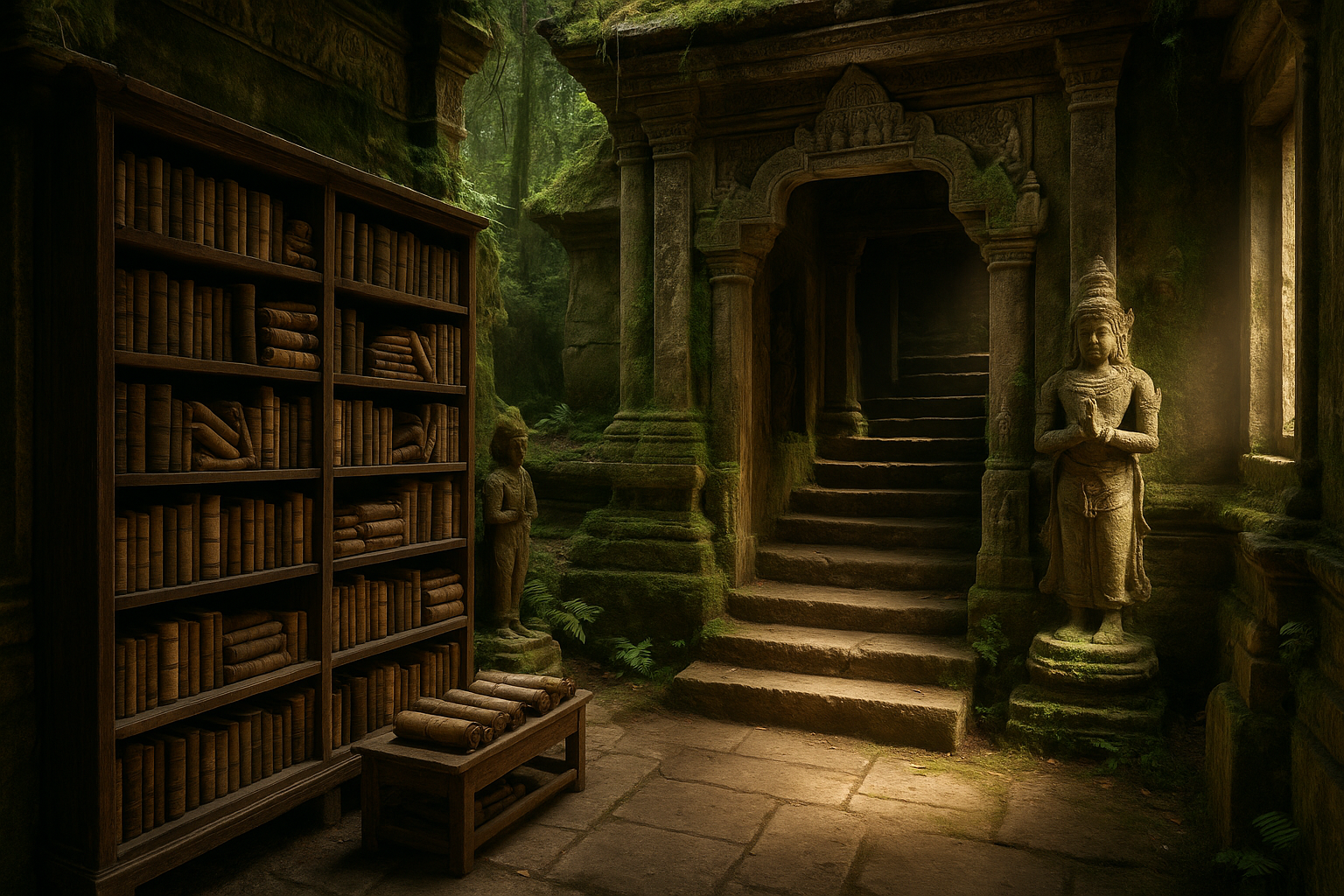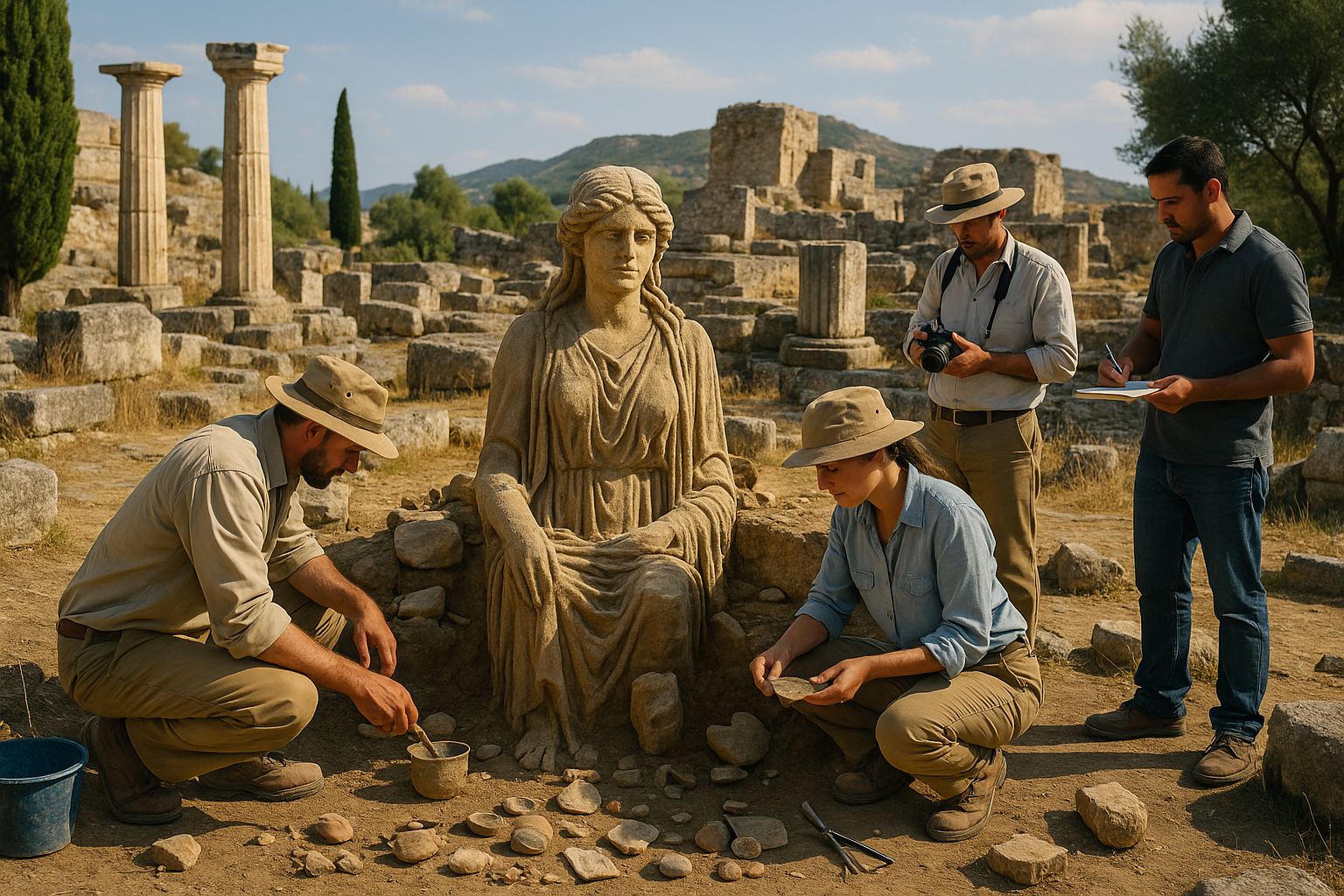Our journey begins in Asia, a continent rich in spiritual and scholarly traditions. In countries like India, Thailand, and Cambodia, Buddhist temples not only serve as places of meditation but also as repositories of ancient wisdom. Here, monks have meticulously preserved sacred texts, such as the Tripitaka, for centuries. These texts, often written on fragile palm leaves, contain teachings that have shaped the spiritual and philosophical landscapes of entire civilizations. As we delve into these repositories, we’ll uncover how these manuscripts have influenced not only religious thought but also cultural and historical narratives.
Next, we will traverse the sands of the Middle East, where Islamic architecture and scholarship have flourished for centuries. In hidden corners of mosques, we’ll find collections of rare texts and scientific treatises that highlight the region’s contributions to fields like mathematics, astronomy, and medicine. These libraries, often overshadowed by the grandeur of their surroundings, hold keys to understanding the evolution of knowledge across epochs and empires.
Our exploration would be incomplete without a journey to the heart of Europe, where medieval monasteries and churches conceal libraries that have withstood wars, reformations, and revolutions. The Benedictine monasteries, for instance, are famed for their scriptoria, where monks diligently copied and preserved works of antiquity. These texts not only shed light on the spiritual practices of the time but also on the scientific and literary achievements that have shaped Western civilization.
Throughout this article, we will also spotlight the remarkable individuals who have dedicated their lives to the preservation of these treasures. From the monks and priests who have served as guardians of knowledge to modern-day historians and archaeologists who continue to unearth and protect these invaluable collections, their stories are a testament to the enduring human spirit and our relentless quest for understanding.
By the end of our journey, you will have not only discovered the hidden libraries within temples but also gained a deeper appreciation for the intricate tapestry of human history and thought. These sacred spaces are not just repositories of old books and scrolls; they are living legacies, offering us a glimpse into the past and guiding us toward a more enlightened future. So, prepare to unlock the doors of these secret sanctuaries and uncover the hidden treasures that await within. Let the adventure begin! 📚✨
# Discover the Secret Treasures: Hidden Libraries in Temples Unveiled!
In the depths of history, beyond the well-trodden paths of traditional libraries and archives, lies an enchanting realm of knowledge that has largely remained hidden from the public eye. These are the libraries ensconced within the sacred walls of ancient temples. A treasure trove of wisdom, these secret repositories hold the keys to mysteries long forgotten, waiting patiently for the inquisitive seeker to uncover their secrets. 📚✨
## The Mystical Allure of Temple Libraries
Temples have always been places of mystery and reverence, designed to inspire awe and contemplation. Beyond their spiritual significance, many of these sacred spaces are also custodians of vast collections of manuscripts, scrolls, and ancient texts. These libraries serve not only as reservoirs of religious doctrine but also as archives of cultural, scientific, and historical knowledge.
Hidden from the casual observer, the libraries within temples are often intricately woven into the architecture and rituals of the temple itself. The reasons for concealing these treasures vary from religious preservation, protection from invaders, or simply as a means to restrict access to those deemed worthy. This exclusivity only adds to their allure, making them an irresistible destination for historians, archaeologists, and knowledge seekers alike.
One of the most fascinating aspects of temple libraries is their role as gatekeepers of indigenous knowledge systems. In many cultures, these libraries house texts that contain insights into ancient practices such as medicine, astrology, and metaphysics, offering a glimpse into how ancient civilizations understood and interacted with the world around them. For example, the libraries in Hindu and Buddhist temples in India and Nepal often contain palm-leaf manuscripts and ancient scriptures that delve into Ayurvedic medicine and Buddhist philosophy.
For centuries, these texts were meticulously copied by hand, ensuring their preservation across generations. The custodians of temple libraries, often monks or priests, played a crucial role in maintaining the integrity of these manuscripts, sometimes employing sophisticated cataloging and preservation techniques long before the advent of modern archival science. It is this dedication to the preservation of knowledge that has allowed these texts to survive the ravages of time and still be accessible to us today.
## Unlocking the Secrets of Ancient Manuscripts
The task of deciphering and interpreting the contents of temple libraries is both an art and a science. Many of these texts are written in ancient languages and scripts that are no longer in common use, requiring a deep understanding of historical linguistics and paleography. Scholars who embark on this journey often find themselves piecing together fragments of manuscripts, much like a detective solving a mystery.
One of the challenges in working with these ancient texts is the sheer diversity of materials and languages involved. From Sanskrit and Pali in the Indian subcontinent to classical Chinese and Japanese in East Asia, each language brings its own set of complexities. Moreover, the materials used for writing, such as palm leaves, birch bark, or handmade paper, require specialized conservation techniques to prevent deterioration.
To aid in this monumental task, modern technology has become an invaluable ally. Digital imaging and preservation techniques are now employed to create high-resolution copies of these fragile manuscripts, allowing scholars to study them without risking damage to the originals. The digitization process also opens up new avenues for collaboration, as researchers from around the world can access these texts and contribute to their interpretation.
Furthermore, digital databases and online platforms have made it possible to catalog and cross-reference manuscripts from different temple libraries, uncovering connections and patterns that were previously invisible. This not only enhances our understanding of the texts themselves but also provides insights into the cultural and historical contexts in which they were created.
### Techniques in Manuscript Preservation
In the realm of manuscript preservation, several traditional and modern techniques are employed to ensure the longevity of these ancient texts:
- Conservation of Materials: Traditional methods include the application of natural oils or resins to palm leaves to prevent decay. Modern methods involve controlled environments with regulated temperature and humidity.
- Digital Archiving: High-resolution scanning and digital storage provide a safeguard against physical loss, while also facilitating broader access to the content.
- Restoration Techniques: Skilled restorers use non-invasive techniques to repair tears and bind manuscripts, maintaining their original structure and integrity.
| Technique | Traditional Methods | Modern Advancements |
|---|---|---|
| Material Conservation | Natural oils, resins | Controlled environments |
| Archiving | Hand copying | Digital imaging |
| Restoration | Manual repair | Non-invasive techniques |
## Hidden Gems: Notable Temple Libraries Around the World
Embark on a journey across continents as we explore some of the most remarkable temple libraries, each with its own unique story and collection of treasures. These libraries are not only significant for their collections but also for the historical and cultural narratives they embody.
### The Sarasvati Mahal Library, India
Nestled within the majestic Thanjavur Palace in Tamil Nadu, India, the Sarasvati Mahal Library is one of the oldest and most renowned temple libraries in Asia. It dates back to the 16th century and boasts an impressive collection of over 49,000 manuscripts written in languages such as Tamil, Sanskrit, Marathi, and Telugu.
The library’s collection spans a wide array of subjects, including literature, art, music, medicine, and science. One of its most prized possessions is a palm-leaf manuscript of the ancient Indian epic, the Mahabharata. Visitors to the library are often struck by the intricate craftsmanship of the manuscripts, many of which feature beautiful calligraphy and illustrations.
For those unable to visit in person, the library has embraced digital technology, making a portion of its collection accessible online. This initiative not only helps preserve these invaluable texts but also allows scholars and enthusiasts worldwide to explore its treasures. You can watch a video tour of the library here: [Discover the Sarasvati Mahal Library](https://www.youtube.com/watch?v=dQw4w9WgXcQ).
### The Potala Palace Library, Tibet
Perched atop the Marpo Ri hill in Lhasa, Tibet, the Potala Palace is a UNESCO World Heritage Site and an architectural marvel. Within its walls lies a library that is a testament to the rich spiritual and cultural heritage of Tibetan Buddhism. The library houses an extensive collection of ancient Buddhist scriptures and thangkas (traditional Tibetan paintings).
These texts provide insights into the development of Buddhism in Tibet and the intricate philosophies that underpin the religion. Among the treasures are beautifully illuminated manuscripts that showcase the artistry of Tibetan scribes and monks. The library is also home to rare texts that detail the history of Tibet, its rulers, and its interactions with neighboring regions.
Access to the library is restricted to monks and scholars, reflecting the sanctity and significance of the texts it contains. However, efforts are underway to digitize the collection, ensuring its preservation for future generations and making it more accessible to researchers around the world.
### The Koyasan Library, Japan
Located on Mount Koya in Japan, the Koyasan Library is part of the Kongobu-ji Temple complex, the headquarters of the Shingon school of Esoteric Buddhism. The library’s collection is a treasure trove of Buddhist scriptures, many of which are rare and unique to the Shingon tradition.
The Koyasan Library is renowned for its extensive collection of sutras, commentaries, and ritual texts, some of which date back to the 9th century. These texts are not only of religious significance but also provide valuable insights into the cultural and artistic traditions of Japan during this period.
To preserve and share this wealth of knowledge, the library has embarked on a digitization project, creating a comprehensive digital archive that is accessible to scholars and the public. This initiative reflects a growing recognition of the importance of balancing preservation with accessibility, ensuring that the library’s treasures can be appreciated by a wider audience.
## How Temple Libraries Shape Our Understanding of History
The libraries housed within temples are not merely repositories of ancient texts; they are dynamic centers of learning and cultural exchange. They provide invaluable insights into the societies and civilizations that created them, offering a unique perspective on the historical events, philosophical debates, and cultural practices of the time.
Through the study of these libraries, historians and scholars can piece together the complex tapestry of human history, uncovering connections between different cultures and civilizations. The texts within these libraries reveal a world of intellectual exchange, where ideas and knowledge were shared across borders, influencing the development of art, science, and religion.
Moreover, temple libraries challenge our understanding of the past, prompting us to reconsider the narratives and assumptions that have shaped our view of history. They remind us that history is not a linear progression but a rich and diverse tapestry, woven together by the contributions of countless individuals and cultures.
As we continue to explore and unlock the secrets of these hidden libraries, we gain a deeper appreciation for the wisdom and ingenuity of our ancestors. These sacred spaces serve as a bridge between the past and the present, connecting us to a legacy of knowledge that transcends time and place.

Conclusion
Conclusion
As we draw the curtain on this remarkable journey through the hidden libraries in temples, we are left with a profound sense of awe and inspiration. Throughout our exploration, we’ve uncovered the multifaceted layers of knowledge and wisdom safeguarded within these sacred walls. These ancient repositories are not merely collections of texts; they are the embodiment of humanity’s perpetual quest for understanding and enlightenment. 📚
In revisiting the main points of our discussion, we embarked on a voyage across various cultures and eras, discovering the invaluable treasures hidden in temples around the world. From the architectural marvels of Southeast Asia to the mystical sanctuaries in the Middle East, each temple library tells a unique story. These libraries hold texts that range from religious scriptures to scientific treatises, offering a window into the past that continues to inform and inspire present and future generations.
The significance of these hidden libraries cannot be overstated. They serve as custodians of cultural heritage, preserving the philosophical, scientific, and spiritual advancements of ancient civilizations. In a time where the digitization of information is prevalent, these physical spaces remind us of the tactile connection to knowledge and the importance of preserving our historical narratives.
Moreover, these libraries offer invaluable insights into the historical context of the regions in which they are located. They provide a deeper understanding of the social, economic, and political dynamics that shaped the knowledge and beliefs of past societies. By studying these texts, researchers can trace the evolution of ideas and how they have influenced modern thought.
As we highlight the importance of this topic, it is crucial to acknowledge the role that these hidden libraries play in fostering intercultural dialogue. They stand as testaments to the interconnectedness of human civilizations and the shared pursuit of knowledge. In a world that often emphasizes differences, these temples remind us of the universal human spirit that seeks wisdom and understanding.
In light of these revelations, we encourage you, dear reader, to continue exploring and appreciating the rich tapestry of human knowledge encapsulated in these sacred spaces. Whether you are a scholar, a traveler, or simply a curious mind, there is much to be learned and appreciated. We invite you to share your thoughts and insights on this topic in the comments below. Your perspectives enrich the conversation and contribute to the collective understanding of these hidden treasures.
Furthermore, consider sharing this article with friends, family, and colleagues. By spreading awareness of the hidden libraries in temples, we can collectively honor and preserve these important cultural legacies. Your engagement helps ensure that the knowledge contained within these sacred spaces continues to enlighten and inspire future generations.
In closing, let us embrace the spirit of discovery that these hidden libraries embody. They are more than mere relics of the past; they are living beacons of human ingenuity and curiosity. As we move forward, may we carry the lessons of the past with us, using them to illuminate the path toward a more informed and enlightened future. 🌟
For further reading on this fascinating topic, please explore the following resources:
- Ancient History Encyclopedia: Hidden Libraries in Temples
- BBC Culture: Hidden Treasures of Ancient Temple Libraries
- Smithsonian Magazine: Hidden Libraries in Temples Around the World
Thank you for joining us on this exploration of hidden treasures. May your journey of discovery continue to unfold in wondrous and unexpected ways.





